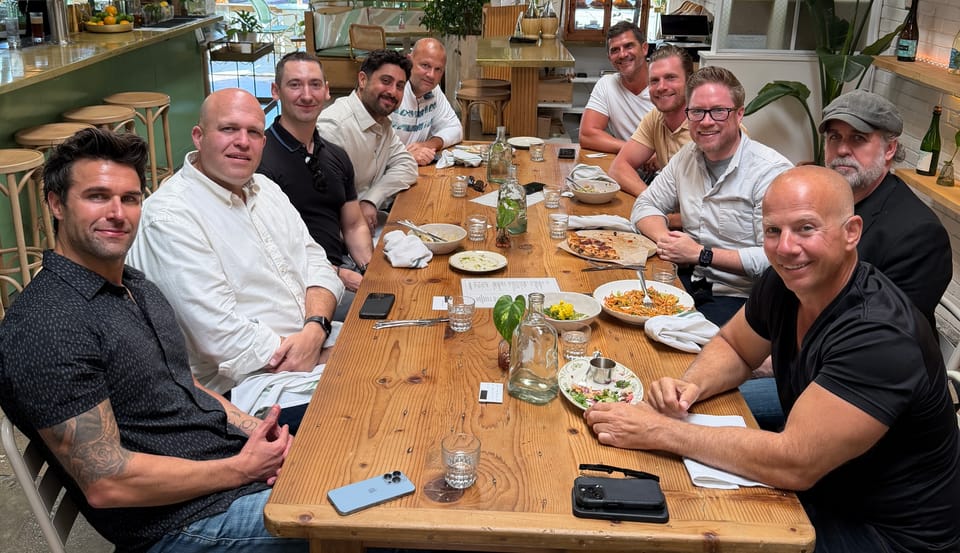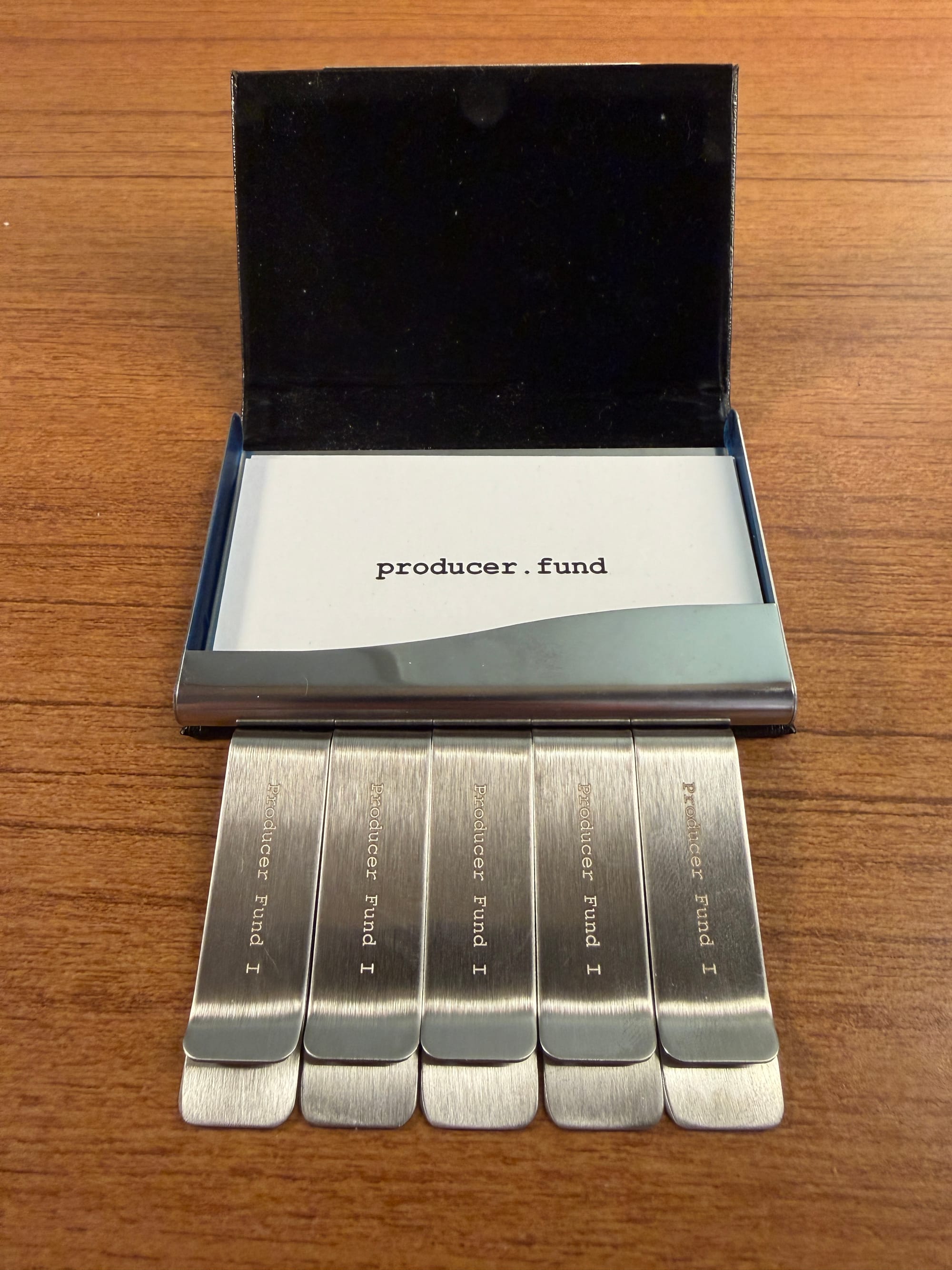Hosting Investor Events

There aren't "film investors" in Utah, at least not ones that I know of.
There aren't film investor events, or networking mixers, or anything like that.
So, I had to create them myself.
In this post I'll walk you through everything I do to host events that get investors to show up, raise their hand and signal their interest in the space, and have great conversations that lead to committing capital.
Let's dive in.
You Can't Convince Anyone
A director recently asked me, "How do you convince people to invest in your projects?"
You don't.
No one is "convinced". Jobs To Be Done Theory states that people don't buy projects, they hire them to make progress.
So you have to start with a mindset shift: you're not selling, you're helping. You aren't a salesperson, you're a concierge, interested in helping people make progress.
Creating Events
There are two types of events that I've put together successfully over the last year. A "summit" and a "salon-style lunch". Let's start with the lunch.
Salon-Style Lunches
Historically, a salon is "a meeting of intellectuals or other eminent people at the invitation of a celebrity or socialite."
What that means today is: this is different, special, exclusive, and you don't want to miss the discussion.
The event is super simple:
Pick a restaurant
Find one that has good food, you can make a reservation on OpenTable or on their website, and can take a reservation for up to 8 or 10 people.
Four people is too small, 12 people is too many. 6-10 (including yourself) is perfect.
Make a reservation, then head to step 2:
Create an event
Use an app like Luma or Eventbrite to set up a way for people to get the details about the event, and RSVP. Set a capacity, make the guest list public, and start inviting people.
Hint: Use a simple phrase on the invite like "I'm hosting the salon, and guests will enjoy lunch together with each person handling their own meal".
Host the conversation
As the host, you don't have to pay for everyone, but you do need to take responsibility for everything. I tell the guests, once we're all seated, how frustrating it is to go to lunch and only talk to the two people sitting next to you.
Instead, these salon-style lunches are led by me. I hand out business cards with simple questions on the back like "what's your favorite movie and why?" or "what excites you about indie film right now?"

One person reads the question on their card, then answers it, and then we go around the circle with everyone answering that question. Then we go to the next question and the next. Typically you only get to 2-3 questions over a 2 hour period.
These are not pitch events! Set the tone early that we are here to have a conversation about [topic], not to pitch our businesses. Tell everyone you'll connect them with an email after so they can follow up with anyone they'd like to.
By the end of two hours together, you'll have had a wonderful conversation, and also it will be very clear who you want to connect with after for deeper conversation about your project.
The Summit
In January I hosted the Utah Film Investor Summit. (You can call things whatever you want, btw.)
It was a structured, programmed event. You need a few things to pull this one off:
A Cool Venue
I hosted the summit at the Utah Film Studios in Park City, during both the Sundance Film Festival and Utah Tech Week.
There were plenty of people in town for both events, and I reached out to about 200 people with a personalized invite.
The venue did some of the heavy lifting. When you are inviting people you've never met before, there's some resistance you'll need to overcome to get them there. Hosting the event at a great venue helps.
Great Programming
At the summit I had my friend Ryan Innes perform a 20-minute set, we had a round-table discussion on "the opportunities that exist in indie film", and I spent the final 10 minutes pitching Producer Fund I.
That was 1 hour of the 2-hour event.
The first 30 minutes is for people to arrive, check in, and grab some drinks and/or snacks. I reached out to San Diablo Churros and Thirst drinks, who both sponsored the event, meaning they provided churros and drinks for free.
(The venue was also a sponsor, so the location didn't cost me anything either!)
The last hour was for networking and the "surprise".
A "Surprise"
Beyond just a cool venue, cool people (more on that in a second), and great programming, you need one other element that makes it feel like they would be missing out if they didn't come.
For this event, the surprise was the chance to take a tour of the studio. The team at Utah Film Studios took about 3 different groups on a 15 minute tour of the whole facility, and it was a highlight for many people who had either a) never been in a film studio like this before, or b) never had taken a tour of a facility like this before, despite being in the industry.
It was a highlight that people talked about long after the event ended.
Now, all of that is well and good, but if only 5 people show up, it's a bust. So how do you fill the room with the right people?
Casting The Net
The next part is about casting a wide enough net that the investors you're looking for are within what you pull up.
Don't just put an event announcement on your social feed and hope that fills the room. Focus, instead, on personalizing each invitation so that the person feels special and quasi-obligated to at least respond, if not attend.
It's fairly easy to find a large group of "investors" or "producers" or "whatever" on LinkedIn. The platform is built for this purpose. You can add a level of sophistication if you sign up for Sales Navigator and pay for a premium account.
Search for "angel investor" in your city and you'll get a list of hundreds, maybe even thousands of people. (Yes, people actually put "angel investor" in their LinkedIn profiles!)
Here it's a bit of a numbers game. If you want 10 people to come to your lunch, plan on inviting 50-100 people. You can do that in a day.
If you have an event that has a capacity of 100 people, you'll need to invite hundreds of people. That will take multiple days, or a week or two. Plan accordingly.
Hint: if you set it so that people can bring a +1, that fills the room faster.
I would start inviting people at least 1 month out for larger, summit-style events, and at least 2 weeks out for lunches.
Any earlier and people won't want to commit, too much later and they'll already be booked.
Keep inviting people until you hit your capacity. You want there to be people on the "waitlist" in case people don't show, and people will definitely no-show.
For lunches, plan on anywhere from 1-5 people not showing up, and for events 30-40% of the people who RSVP won't show.
That said, it's better to set your capacity at 10 (lunch) or 100 (summit) and have 2 or 50 people on a waitlist, then to increase the capacity to 12 or 150. The reason: perception.
An event that's sold out and has a waitlist is a must-attend. An event with only 20% capacity is potentially a dud. Perception is reality.
Getting Good
Your first event will likely be awkward. Your first lunch may have the "wrong" people there. Your 10th event may have an 80% no-show rate.
This is all par for the course - part of the process. Unless you're a celebrity, you won't have lines around the corner of people wanting to get in. But you can definitely host an event, and you can probably do it this month if you follow the principles from this post.
Just keep going. Don't stop after one, make them regular occurrences.
I host quarterly film & TV producer meetups, annual/semi-annual "summit" style events, and monthly (sometimes weekly, or even multiple-per-week) lunches. When you're in fundraising mode, volume matters, because it creates momentum that gets people excited to be a part of what you're doing.
In another post I'll talk about hosting another, specific style event, a "script preview". If you want to get that when it goes live, be sure to sign up for the email list below:
Questions? Let me know in the comments.

Member discussion